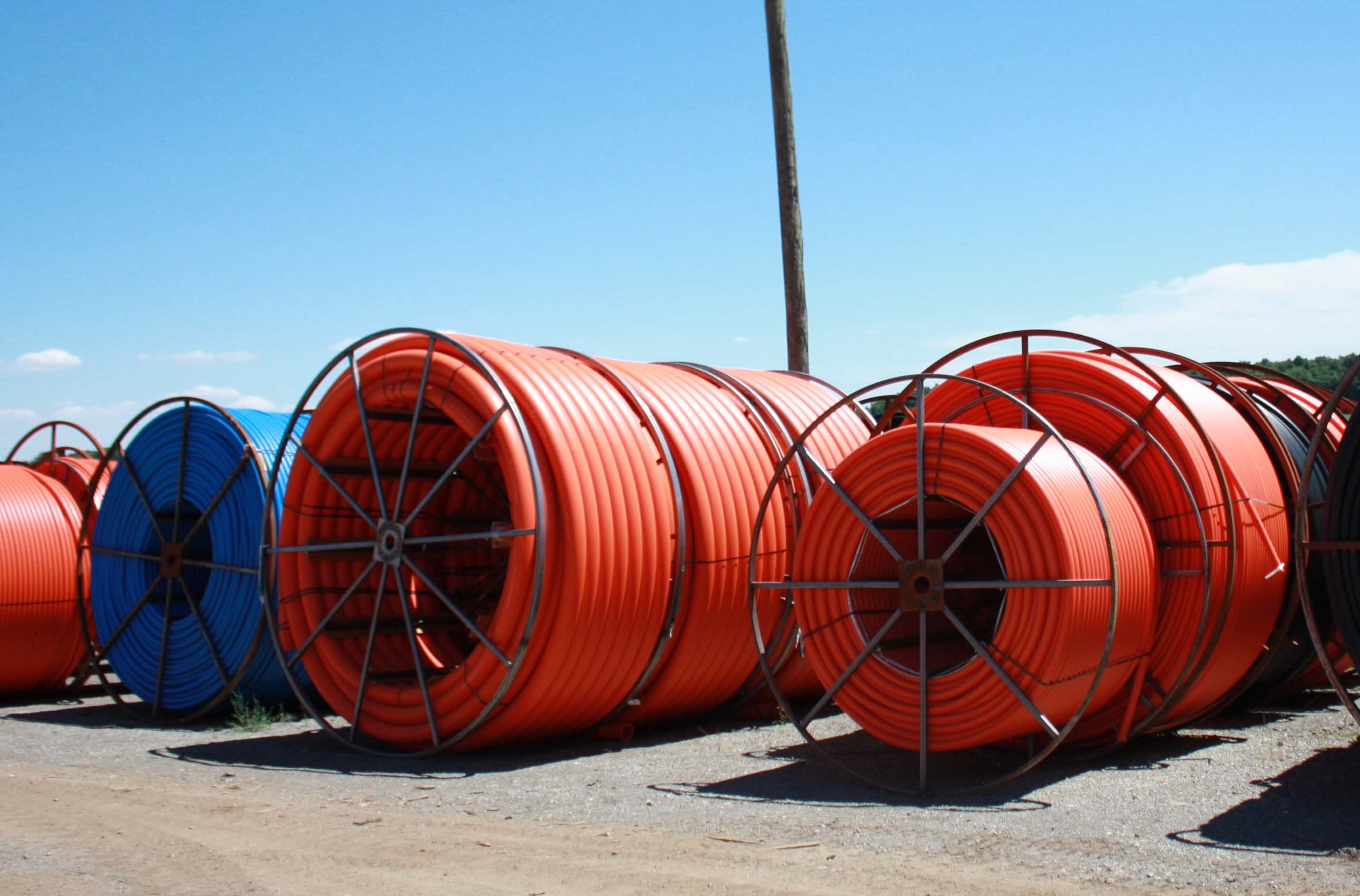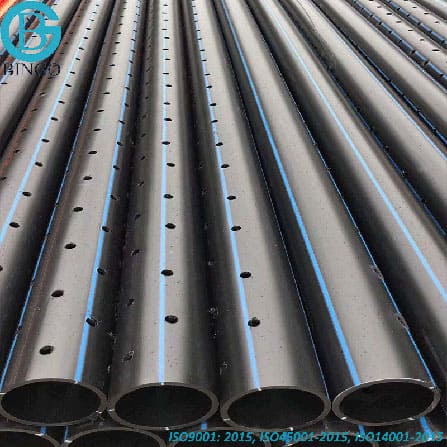Why Partnering with Pipe Supplier American Plastics Midland Ensures Timely Supply
Wiki Article
Check Out the Manufacturing Refine Behind High-Quality HDPE Pipe and Its Applications
The manufacturing procedure of top quality HDPE pipes is elaborate and methodical. It starts with the choice of basic materials that improve efficiency. Following this, ethylene undertakes polymerization to form material, which is then shaped via extrusion. Quality control is vital, making sure that the end product fulfills stringent criteria. The journey of HDPE pipelines does not finish with manufacturing. Their applications across numerous sectors reveal a wider relevance worth examining.Comprehending HDPE: Properties and Advantages

High-density polyethylene (HDPE) is a flexible polycarbonate recognized for its sturdiness and resistance to various ecological aspects. This product exhibits exceptional tensile stamina, making it suitable for requiring applications. Its low-density framework adds to a light-weight item, promoting simplicity of dealing with and installment. HDPE also showcases impressive resistance to chemicals, which decreases destruction when subjected to severe materials.
The product's reduced dampness absorption further enhances its durability, making it ideal for usage in pipelines and storage containers. Additionally, HDPE is immune to ultraviolet (UV) radiation, making certain that products preserve their stability also when exposed to sunlight. Its versatility permits for the production of detailed forms without compromising stamina. The green nature of HDPE, often acquired from recycled materials, includes in its appeal, advertising lasting methods in production. On the whole, these residential properties and benefits make HDPE a preferred choice for numerous commercial and customer applications.
Basic Material Option for HDPE Manufacturing
The choice of basic materials for HDPE production is vital to verify the end product meets the wanted specifications and high quality requirements. High-density polyethylene (HDPE) is largely generated from polymerized ethylene, originated from nonrenewable fuel sources such as gas or petroleum. The top quality of these feedstocks greatly affects the mechanical and thermal properties of the last HDPE.Ingredients additionally play a substantial duty in boosting HDPE's efficiency, including anti-oxidants, UV stabilizers, and colorants, which boost resilience and resistance to environmental aspects. The option process need to think about not just the chemical structure of the raw materials yet likewise their handling attributes to guarantee efficient production.
Additionally, the sourcing of resources need to prioritize sustainability and compliance with ecological guidelines, as accountable practices are imperative in today's market. Ultimately, mindful basic material option lays the structure for creating high-grade HDPE pipes suitable for diverse applications.
The Extrusion Refine: Shaping HDPE Pipe
The extrusion process plays an essential function in forming HDPE pipelines, beginning with precise product preparation methods that guarantee excellent circulation and consistency. Similarly crucial is the layout of the die, which directly influences the last measurements and surface area top quality of the pipe. Together, these factors contribute considerably to the efficiency and high quality of HDPE pipeline production.Material Preparation Strategies
Efficient production of HDPE pipelines starts with precise material preparation strategies, specifically the extrusion process. During this stage, high-density polyethylene material is first dried to remove moisture, making certain excellent flow qualities. The resin is after that fed into the extruder, where it goes through home heating and melting, transforming into a thick state. This heating process is very carefully regulated to maintain the product's integrity and efficiency. The liquified HDPE is required through a die, forming it right into a constant pipe kind. Appropriate temperature monitoring throughout extrusion is crucial, as it straight affects the product's residential properties and the end product quality. As soon as shaped, the HDPE pipeline is cooled and cut to defined lengths, all set for subsequent processing and applications.Die Layout Significance
Accuracy in die style plays an important duty in the extrusion process of HDPE pipes. The die serves as the last shaping device, directly influencing the pipeline's measurements, wall thickness, and surface area finish. A properly designed die assurances consistent material circulation, lowering flaws such as irregularities and weak areas. The geometry of the die need to be optimized to accommodate the details residential properties of HDPE, including its thickness and thermal actions during extrusion. Furthermore, the cooling price of the material as it goes through the die can noticeably impact the pipeline's architectural honesty. Investing in sophisticated die technology is important for suppliers intending to create high-grade HDPE pipes that meet sector criteria and consumer assumptions.Quality Control Measures in HDPE Manufacturing
Various elements influence the quality of HDPE pipe manufacturing, efficient high quality control measures are vital to guarantee consistency and reliability in the last item (American Plastics HDPE Pipe for Oilfield). Trick quality control methods include strenuous product examination, validating that the raw polyethylene fulfills well established standards for pureness and thickness. Throughout the extrusion procedure, specifications such as temperature, pressure, and cooling time are carefully kept track of to maintain dimensional precision and structural integrityFurthermore, post-production testing is essential; makers typically conduct hydrostatic tests to analyze the pipeline's toughness and resistance to stress. Visual assessments for surface area problems further enhance quality control. Qualification from appropriate standards companies, like ASTM or ISO, supplies an extra layer of integrity. By executing these detailed quality assurance steps, makers can minimize issues, improve performance, and make certain that the HDPE pipelines fulfill the specific demands of various applications, inevitably leading to consumer complete satisfaction and count on the product.
Applications of HDPE Pipeline Across Industries
like it HDPE pipes are used throughout different sectors because of their sturdiness and adaptability. In water circulation systems, they ensure efficient distribution, while in wastewater administration, they provide reputable remedies for waste transport. In addition, farming watering networks take advantage of HDPE's resistance to deterioration and versatility, making it a perfect option for contemporary farming practices.
Water Circulation Solutions
A substantial number of industries depend on high-density polyethylene (HDPE) pipelines for efficient water circulation systems. Known for their toughness and resistance to rust, HDPE pipes are widely used in municipal water networks, agricultural irrigation, and commercial applications. Their lightweight nature helps with very easy handling and installment, decreasing labor expenses and time. Additionally, HDPE pipes can fit various stress degrees, making them appropriate for both reduced and high-pressure systems. hdpe pipe in stock Midland TX. The flexibility of the product enables for seamless integration into existing framework, minimizing the requirement for considerable excavation. Additionally, HDPE's resistance to chemical leaching guarantees that the water delivered stays risk-free and clean, making it an optimal option for preserving the quality of potable water across numerous industriesWastewater Monitoring Solutions
Effective water circulation systems also lead the view means for innovative wastewater monitoring remedies, where high-density polyethylene (HDPE) pipes play a considerable role. Renowned for their durability and resistance to corrosion, HDPE pipes are excellent for delivering wastewater in different settings. Their versatility permits simple setup in intricate environments, reducing the requirement for substantial excavation. Additionally, HDPE's smooth interior surface reduces friction, improving flow rates and effectiveness. These pipelines are also resistant to chemical leaching, making sure that pollutants do not jeopardize the surrounding setting. Industries, municipalities, and therapy centers significantly depend on HDPE pipelines for their reliability and durability, making them a recommended choice for contemporary wastewater administration systems. This versatility underscores the crucial significance of HDPE pipelines throughout many applications.Agricultural Watering Networks
Agricultural irrigation networks profit substantially from making use of high-density polyethylene (HDPE) pipelines, which supply efficient and trusted water distribution to plants. HDPE pipes are lightweight, making them simple to carry and set up, while their adaptability enables for numerous configurations in diverse surfaces. These pipes show exceptional resistance to rust, chemicals, and UV radiation, making sure durability in rough farming atmospheres. Additionally, their smooth interior surface decreases rubbing loss, optimizing water circulation and decreasing power prices connected with pumping. The durability of HDPE pipelines, usually going beyond 50 years, adds to decrease maintenance and replacement expenses. As a result, farmers increasingly count on HDPE pipelines to boost watering efficiency and advertise lasting agricultural methods, eventually bring about improved crop yields and resource conservation.Future Patterns in HDPE Pipeline Technology
As the need for sustainable and reliable facilities grows, improvements in HDPE pipe technology are positioned to change different sectors. Emerging trends include the combination of wise technologies, such as sensors and IoT capabilities, which assist in real-time tracking of pipeline conditions, decreasing maintenance expenses and protecting against leaks. Additionally, the development of innovative manufacturing methods, such as 3D printing, is allowing the manufacturing of facility, customized pipeline layouts that provide to specific job demands.Moreover, the emphasis on recycling and round economic climate practices is driving the advancement of HDPE pipelines made from recycled materials, enhancing sustainability. Improved jointing methods, such as electro-fusion and mechanical fittings, are likewise improving setup performance and reliability. Finally, the growing emphasis on ecological regulations is pushing makers to take on greener production processes, guaranteeing that HDPE pipelines not just meet industry standards yet also cultivate a more sustainable future for facilities advancement.
Regularly Asked Questions
Just How Does HDPE Compare to Various Other Plastic Products?
HDPE outmatches several various other ptfe lined pipe plastic materials pertaining to resilience, chemical resistance, and adaptability. Its reduced thickness and high tensile strength make it suitable for different applications, typically surpassing options in both efficiency and durability.What Are the Environmental Effects of HDPE Production?
The environmental impacts of HDPE production consist of greenhouse gas discharges, energy intake, and potential contamination from manufacturing processes. Furthermore, inappropriate disposal can result in soil and water contamination, increasing issues regarding lasting environmental effects.Can HDPE Piping Be Recycled?
Yes, HDPE pipes can be recycled. Numerous centers approve used HDPE for processing, changing it right into brand-new items. This recycling adds to sustainability initiatives, minimizing plastic waste while conserving sources and power in the production cycle.What Is the Lifespan of HDPE Piping?

Just How Do Temperature Level Variants Impact HDPE Pipeline Efficiency?
Temperature variants substantially influence HDPE pipeline efficiency, influencing versatility and stamina. Heats can cause softening, while reduced temperature levels might cause brittleness, ultimately influencing the pipe's longevity and viability for numerous applications in varied settings.Report this wiki page